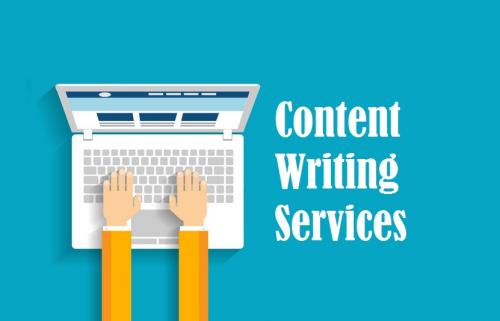How to Optimize Website Page Speed: A Comprehensive Guide
Website speed is a critical factor in determining user experience, SEO performance, and even conversion rates. A fast-loading website not only keeps users engaged but also helps in boosting search engine rankings. Google and other search engines consider page speed as a ranking factor, meaning a slow website could directly impact your visibility and traffic.
In this article, we'll explore practical tips and techniques to optimize your website’s page speed and ensure a smoother, faster user experience.
Why is Website Page Speed Important?
1. User Experience (UX)
The faster your website loads, the better the experience for your users. Research shows that a delay of just a few seconds can increase bounce rates significantly. In fact, Google found that 53% of mobile site visitors will leave a page that takes longer than three seconds to load.
2. Search Engine Rankings
Page speed is a ranking factor for Google. Slow websites can result in lower rankings, which means fewer visitors. Google’s Core Web Vitals, introduced as part of the page experience update, specifically focus on metrics related to speed and overall site interaction.
3. Conversion Rates
Faster websites lead to higher conversion rates. A delay of even one second can reduce conversions by 7%, according to data from Akamai. Whether your goal is to get more sales, sign-ups, or clicks, speeding up your website can directly contribute to better business outcomes.
Steps to Optimize Website Page Speed
1. Measure Current Speed
Before you start optimizing, it's important to know where your website stands. Use tools like Google PageSpeed Insights, GTmetrix, or Pingdom to assess your website’s performance and identify areas for improvement. These tools provide detailed reports on factors affecting load times, such as:
- Largest Contentful Paint (LCP): Time taken for the largest element on the page to load.
- First Input Delay (FID): Time taken for the page to respond to the first user interaction.
- Cumulative Layout Shift (CLS): Visual stability of the page during loading.
2. Optimize Images
Images are often the largest files on a webpage, and they can significantly impact load times. Here's how to optimize them:
- Resize images: Ensure images are not larger than necessary. If an image needs to display at 500px, avoid uploading a 2000px-wide file.
- Compress images: Use compression tools like TinyPNG or ImageOptim to reduce file size without sacrificing quality.
- Use the right format: Choose the right format for each type of image:
- JPEG for photos or images with gradients.
- PNG for images with transparency.
- WebP for smaller file sizes with high quality (supported by most modern browsers).
- Implement Lazy Loading: Load images only when they come into view (i.e., when the user scrolls down the page). This reduces initial page load times.
3. Enable Browser Caching
Browser caching allows a website to store certain files (such as images, CSS, and JavaScript) locally on the user’s device so they don't need to be reloaded every time the user visits a page.
- Set Cache Expiry Dates: Instruct the browser to cache files for a specified period of time. For example, you can set images or static files to be cached for a week or more, but update dynamic content like HTML more frequently.
- Leverage HTTP Caching: Use caching headers to tell the browser how long it should keep files before re-checking with the server.
4. Minimize HTTP Requests
Every time a page loads, the browser has to request files from the server. These requests can be for images, CSS, JavaScript, fonts, etc. Too many HTTP requests can slow down page loading. To minimize requests:
- Combine CSS and JavaScript files: Instead of having multiple CSS or JavaScript files, combine them into one (or as few as possible).
- Remove unnecessary scripts: Audit your website to remove unused or unnecessary third-party scripts and plugins.
- Use CSS sprites: Combine multiple small images (like icons) into a single image file and use CSS to display only parts of it. This reduces the number of image requests.
5. Minify CSS, JavaScript, and HTML
Minification refers to removing unnecessary characters (spaces, comments, line breaks) from your code without affecting its functionality. Smaller files load faster.
- CSS Minification: Remove whitespace, comments, and extra characters from CSS files.
- JavaScript Minification: Similarly, remove unnecessary characters from JavaScript files.
- HTML Minification: Minify HTML by eliminating extra spaces, comments, and line breaks.
You can use tools like UglifyJS (for JavaScript), CSSNano (for CSS), or HTMLMinifier (for HTML) to minify your code.
6. Use a Content Delivery Network (CDN)
A Content Delivery Network (CDN) is a network of geographically distributed servers that cache copies of your website’s static content. When a user visits your site, the content is served from the server closest to them, which reduces latency and speeds up page loading times.
Popular CDN providers include Cloudflare, KeyCDN, and Amazon CloudFront.
7. Optimize CSS and JavaScript Delivery
Ensuring that your CSS and JavaScript are loaded in an efficient manner is key to improving performance.
- Defer JavaScript: By deferring JavaScript, it will load after the initial HTML is loaded. This prevents the browser from blocking rendering while it loads and executes JavaScript.
- Async JavaScript: Use the
asyncattribute for scripts that can be loaded independently of the rest of the page. - Critical CSS: Inline essential CSS directly into the HTML of the page to reduce render-blocking and speed up initial page load times.
8. Reduce Server Response Time
The time it takes for your server to respond to a request can also impact page speed. To reduce server response time:
- Upgrade Hosting: If you're using shared hosting, it may be time to upgrade to a more robust solution like VPS or dedicated hosting.
- Use a Faster Web Server: Switch to web servers like Nginx or LiteSpeed, which are known for their speed and performance over traditional Apache servers.
- Optimize Your Database: Regularly clean and optimize your database by removing unused data and optimizing queries.
9. Enable Gzip Compression
Gzip is a popular file compression format that reduces the size of your files (HTML, CSS, JavaScript, etc.) before they are sent from the server to the browser.
To enable Gzip compression, you can modify your server configuration (e.g., using .htaccess in Apache) or use plugins in platforms like WordPress.
10. Reduce Redirects
Each redirect (301, 302) causes an additional HTTP request and response cycle, which can slow down your website. Avoid unnecessary redirects, and ensure they’re properly configured to minimize the performance impact.
Conclusion
Website speed is an essential factor in maintaining a good user experience and improving your SEO rankings. By following the optimization techniques outlined in this article, you can drastically improve your page load times, leading to better user engagement, higher conversions, and improved search engine performance.
Remember, optimizing page speed is an ongoing process. Regularly audit your website’s performance, especially after making updates or adding new content. The faster your website is, the better experience you provide for your users—and the more successful your online presence will be.




Comments